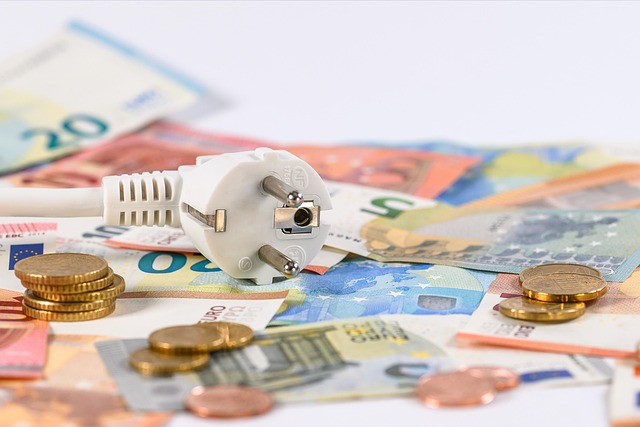Compare UK Energy Prices: Who Offers the Best Value in 2025?
The UK energy landscape is undergoing rapid transformation, shaped by shifting markets, global pressures, and evolving government policies. With a growing push toward renewable energy, Ofgem’s regulated price caps, and an ever-changing mix of tariffs, both households and businesses must carefully assess their options. Choosing wisely in 2025 could mean significant savings and long-term value.

Assessing the Current Energy Landscape in the UK
The energy market in 2025 continues to reflect the aftereffects of the global energy crisis that began in 2021. While wholesale prices have stabilized compared to their peak, they remain higher than pre-crisis levels. The UK’s energy mix continues to evolve, with renewable sources accounting for an increasing proportion of electricity generation. This transition impacts pricing structures and the types of tariffs available to consumers.
The regulatory framework has also evolved, with Ofgem implementing changes to how the market operates. Independent suppliers have regained some market share after the wave of supplier failures in 2021-2022, providing consumers with more choice. However, the larger suppliers still dominate significant portions of the market, and regional price variations persist across the country.
Energy Price Caps: Implications and Projections
The Energy Price Cap, introduced in 2019 and significantly tested during the energy crisis, remains a central feature of the UK energy market in 2025. This mechanism limits the amount suppliers can charge consumers on standard variable tariffs, protecting millions of households from extreme price fluctuations.
Recent adjustments to the price cap methodology have made it more responsive to wholesale market changes, with reviews now occurring quarterly rather than bi-annually. This means consumers see more frequent but potentially smaller changes to their energy bills. Projections for 2025 suggest the cap will continue to fluctuate, though with less volatility than during the 2021-2023 period.
For consumers, understanding how the price cap affects their bills is crucial. While it provides protection against extreme price hikes, it does not guarantee the best available rates in the market. Many fixed tariffs now offer prices below the cap level, making regular comparison essential for optimizing energy costs.
Understanding Fixed vs. Variable Tariffs
The choice between fixed and variable tariffs remains one of the most important decisions for UK energy consumers. In 2025, fixed tariffs have returned as attractive options for many households, offering price certainty for periods typically ranging from 12 to 24 months.
Fixed tariffs protect consumers from market volatility, locking in a set unit rate and standing charge for the duration of the contract. This provides budgeting certainty but may mean missing out on potential price decreases. Many fixed deals now include exit fees, though these vary significantly between suppliers.
Variable tariffs, including those subject to the price cap, offer more flexibility with no exit fees but expose consumers to price fluctuations. For households that value the ability to switch quickly or believe prices may fall, these can be advantageous. Some suppliers also offer tracker tariffs that directly follow wholesale prices with a predetermined markup, providing a middle ground between fixed and standard variable options.
Switching Providers: Finding the Best Value
The process of switching energy suppliers has become increasingly streamlined in 2025, with the implementation of faster switching protocols reducing the transfer time to just five working days in many cases. Comparison websites and direct supplier engagement remain the primary methods for consumers to explore alternative providers.
When evaluating potential switches, consumers should consider several factors beyond headline rates. Customer service quality, billing accuracy, green credentials, and additional perks or rewards programs can significantly impact the overall value proposition. Smart meter compatibility and functionality also vary between suppliers, affecting consumers’ ability to monitor and manage their energy usage effectively.
The switching process itself involves minimal disruption, with no physical changes to pipes or cables required. The new supplier handles most of the transfer process, though consumers should provide final meter readings to ensure accurate final billing.
UK Energy Provider Comparison 2025
| Provider | Standard Variable Tariff (Annual) | Best Fixed Tariff (Annual) | Green Energy Options | Customer Satisfaction |
|---|---|---|---|---|
| British Gas | £1,780 | £1,695 (12 months) | Yes - 100% renewable electricity | 3.8/5 |
| EDF Energy | £1,790 | £1,680 (18 months) | Yes - Nuclear and renewable mix | 3.9/5 |
| Octopus Energy | £1,750 | £1,640 (12 months) | Yes - 100% renewable electricity | 4.5/5 |
| Ovo Energy | £1,770 | £1,675 (24 months) | Yes - Carbon offset options | 4.0/5 |
| E.ON Next | £1,785 | £1,690 (18 months) | Yes - 100% renewable electricity | 3.7/5 |
| Utility Warehouse | £1,760 | £1,650 (12 months) | Partial renewable options | 4.2/5 |
Prices, rates, or cost estimates mentioned in this article are based on the latest available information but may change over time. Independent research is advised before making financial decisions.
Why You Should Learn More About Comparing Energy Prices Today
Taking control of your energy costs has never been more important given the ongoing market fluctuations. Regular price comparison can yield significant savings – households switching from a standard variable tariff to the most competitive fixed deal could save hundreds of pounds annually.
Beyond immediate cost savings, understanding the energy market helps consumers make more informed decisions about their consumption patterns. Many suppliers now offer smart home integration, time-of-use tariffs, and other innovative features that can further optimize energy usage and costs.
Additionally, increased awareness of energy pricing structures encourages more sustainable consumption habits, potentially reducing both costs and environmental impact. Many providers now offer green tariffs, supporting renewable energy generation and carbon reduction initiatives, allowing consumers to align their values with their energy choices without necessarily paying premium prices.
The energy market continues to evolve, with suppliers introducing new tariff structures and service offerings. By staying informed about these developments and regularly reviewing available options, consumers can ensure they receive the best value for their energy needs while supporting the transition to a more sustainable energy system.




